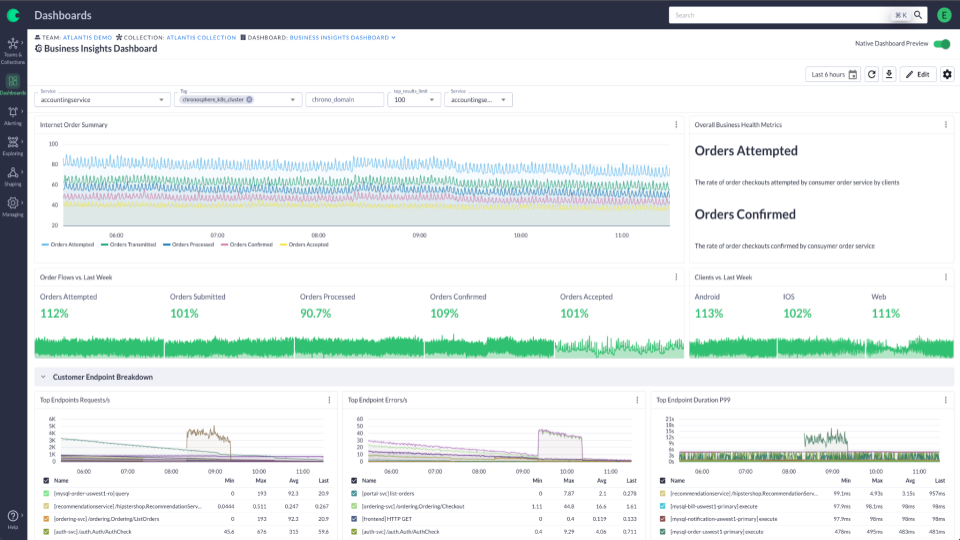Are you taking a look at your company’s efforts to go into or amplify into the cloud-native panorama and feeling a bit of daunted through the huge expanse of data surrounding cloud-native observability? When you find yourself shifting so rapid with Agile practices throughout your DevOps, SREs, and platform engineering groups, it is no surprise this will appear a bit of complicated.
Sadly, the decisions being made have a super affect on each your small business, your budgets, and without equal good fortune of your cloud-native tasks that hasty choices prematurely result in giant complications in no time down the street.
Within the earlier article, we regarded on the drawback of controlling value in cloud-native observability. On this article, you’ll be able to to find the following pitfall dialogue that is some other not unusual mistake organizations make. Via sharing not unusual pitfalls on this sequence, the hope is that we will be told from them.
After laying the groundwork within the earlier article, it is time to take on a pitfall the place we want to forestall focusing: The Pillars. I have spent a while previously speaking about 3 Levels to Higher Observability Results and printed an preliminary tackle why Cloud Local Observability Wishes Levels, however this article is going to be a better dive into the subject.
Specializing in “The Pillars”
For a couple of years now distributors were advertising and marketing the concept you wish to have to concentrate on sure indicators or pillars to succeed in what you want on this planet of cloud-native observability.
Should you glance extra intently at this, they’re pushing laborious for you to pay attention to 3 pillars: metrics, logs, and tracing, with a couple of even sliding in occasions to make it sound all-encompassing. Those are touted as issues you’ll be able to tangibly take a look at a field on for your observability stack. What they finally end up doing is developing a focal point on capability and era options whilst utterly ignoring the issue handy.
It is like we have now a really nice and dear automotive that we cherish and it is began to make humorous sounds whilst emitting smoke after we are riding. We rush to our favourite storage and the mechanic listens to our problems, then proceeds to pull out their toolboxes to blow their own horns the entire nice equipment they’ve to mend problems similar to ours. Whilst this is occurring and on, we glance out the window and spot that our automotive is not simply smoking, however it is on hearth!
After we ask our on-call engineers who’re the entrance line within the struggle of holding our cloud-native trade thriving, they’ll describe a procedure they’ve to head thru to succeed in that during the entire quite a lot of spaces that they imagine price tracking in our trade.
When speaking in regards to the procedure and the way you have to our trade objectives, we listen the trade speaking in words like:
- Higher trade results
- Quicker remediation of issues that happen
- More straightforward drawback detection
- Better income technology
- Engineering groups all in favour of handing over trade worth
Those are all in a language the trade understands and describes extra the method that must be designed for, now not the options the tooling must have. After we deliver this again to cloud-native observability, we would like an answer for our on-call engineers that walks them thru the next 3 stages:
- Realizing: We begin through finding one thing is occurring as rapid as conceivable, possibly even resulting in a handy guide a rough repair on this section.
- Triaging: If not able to mend straight away, then we commence triaging in accordance with in particular centered knowledge this is without delay associated with the issue handy, which then temporarily ends up in solving it.
- Working out: In any case, in all probability at a later time and slower investigative tempo, we want to have an overly deep working out of the problems encountered to make sure it by no means occurs once more.
We do not wish to be faced with visualizations which were designed and grouping knowledge as categorised indicators or as The Pillars. For instance, here’s one thing that used to be in reality designed with out a lot idea in opposition to the method had to clear up any more or less factor, nevertheless it does seize the indicators for you:

Just right success with this if you find yourself on-call.
We in point of fact wish to have blank, concise, and efficient visualizations that provide targeted insights and put simply sufficient knowledge at our fingertips to make knowledgeable choices temporarily. We do not care if one metric, 3 labels, 1 span in a hint, and three log strains are the foundation of the precise informational view – we want to clear up the explanation our beeper went off:

Sharply-focused insights to get you thru the stages.
The street to cloud-native good fortune has many pitfalls and working out how one can steer clear of The Pillars, and focusing as a substitute on answers for the stages of observability will save a lot wasted time and effort.
Coming Up Subsequent
Some other pitfall organizations fight with in cloud-native observability is underestimating cardinality problems. Within the subsequent article on this sequence, I’m going to proportion why this can be a pitfall and the way we will steer clear of it wreaking havoc on our cloud-native observability efforts.
